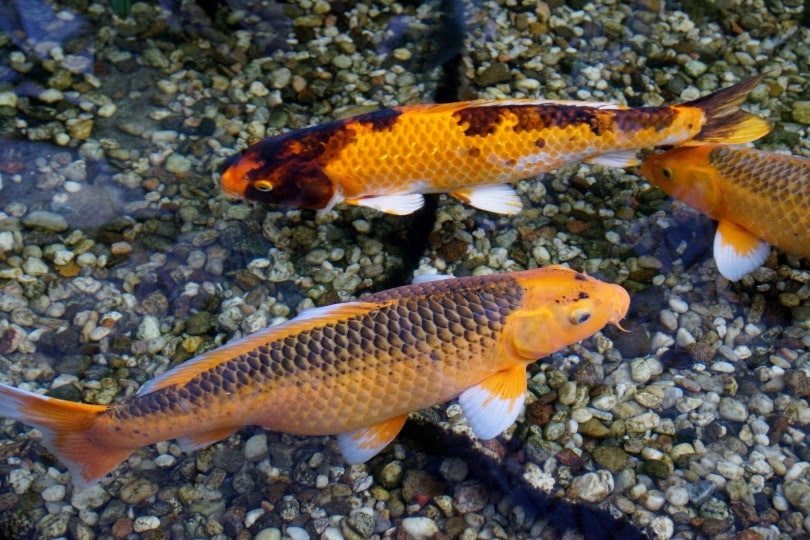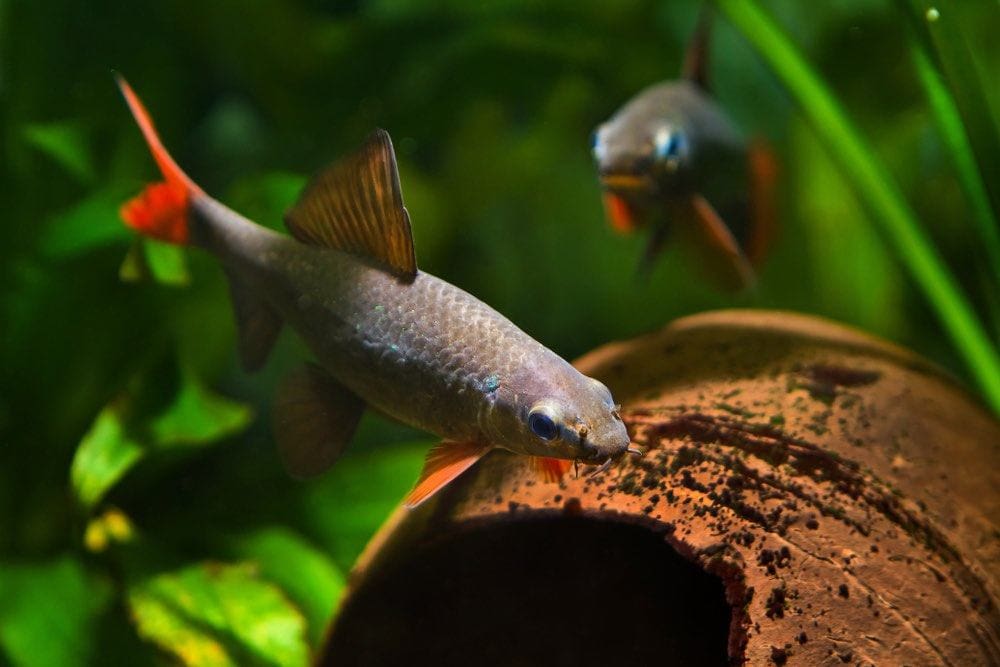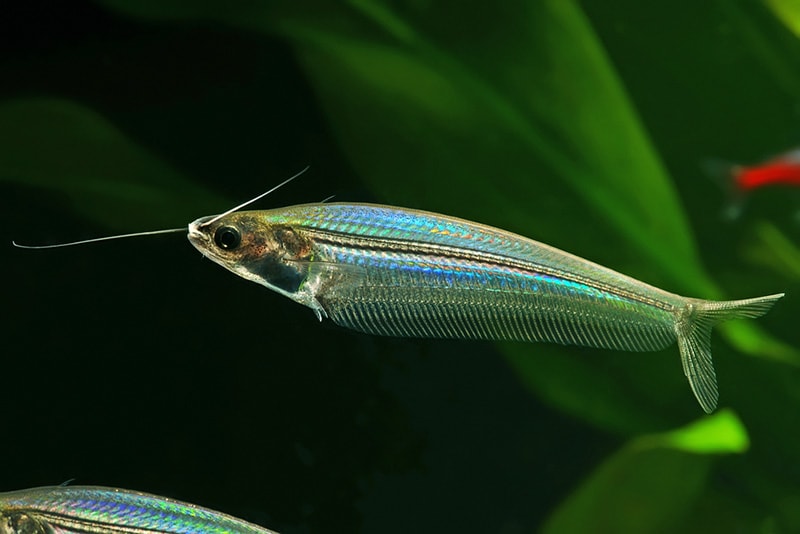Otocinclus Catfish: Pictures, Size, Care, Tank Setup & More
Updated on
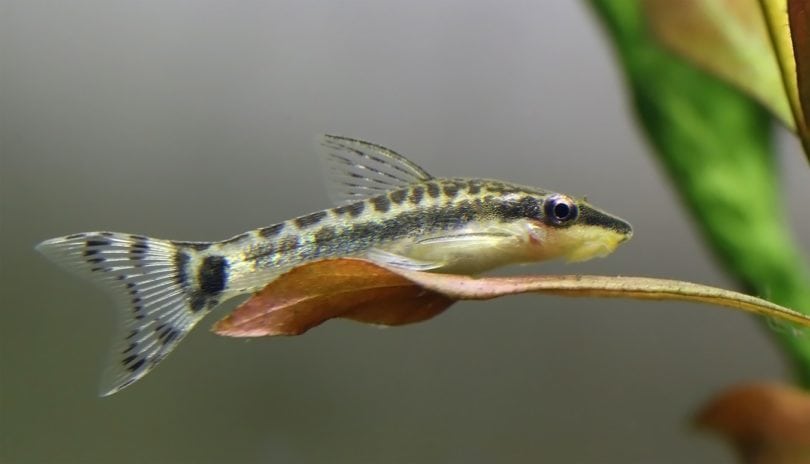
The Otocinclus Catfish describes several species of the genus Otocinclus. The ones you’re most likely to encounter are O. macrospilus and O. vittatus, or O. vestitus. The blanket term is understandable, given the difficulty of correct identification. However, further complicating matters is a fish with the scientific name O. affinus. This species has since been moved to its own genus, Macrotocinclus.
Suffice it to say that when you buy an Otocinclus Catfish, you’re getting a fish similar to the aforementioned species that require comparable care. Remember this information when choosing fish to add to your aquarium. With all that said, let’s dive into what you need to know about the Otocinclus Catfish species.

Quick Facts about Otocinclus Catfish
| Species Name: | Otocinclus macrospilus and O. vittatus, O. vestitus, or Macrotocinclus affinus |
| Family: | Loricariidae |
| Care Level: | Easy |
| Temperature: | 72℉–79℉ |
| Temperament: | Peaceful community fish |
| Color Form: | Gray to brown with a black horizontal line or markings on the fish’s tail |
| Lifespan: | 3–5 years |
| Size: | 1–2 inches |
| Diet: | Herbivores, typically feeding on algae |
| Minimum Tank Size: | 10 gallons |
| Tank Setup: | Community tank with plenty of cover and live plants |
| Compatibility: | Compatible with other community species |
Otocinclus Catfish Overview
You may not see much of your Otocinclus Catfish since they are nocturnal. Interestingly, they are schooling fish. That fact plays a direct role in your aquarium setup. Their peaceful nature and algae diet make them a suitable addition to any tank. They stay small and won’t harass other tank mates, which is a common unwanted behavior in the larger Chinese Algae Eater.
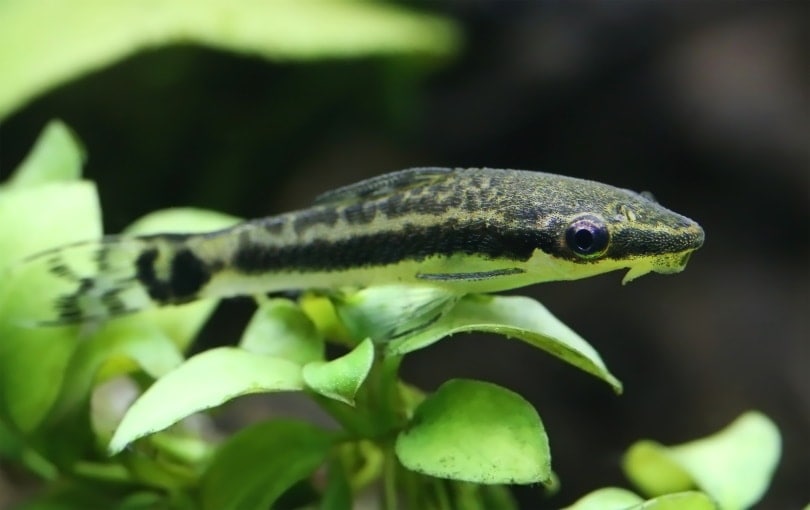
How Much Do Otocinclus Catfish Cost?
Otocinclus Catfish are not expensive. Depending on the species, size, and coloration, you can expect to pay between $3 to $10. We recommend keeping them in small schools of six. That makes the addition of live plants essential for ensuring there is enough food for them. They will do an excellent job of keeping algae under control in your tank, making them worth the investment.
Typical Behavior & Temperament
Otocinclus Catfish keep to themselves and don’t both their tank mates. They probably won’t have any competitors for food if you stick to this species for your bottom feeders. They’re more likely to be the object of aggression than the cause. Therefore, make sure you don’t add any of these species to your aquarium to maintain the peace.
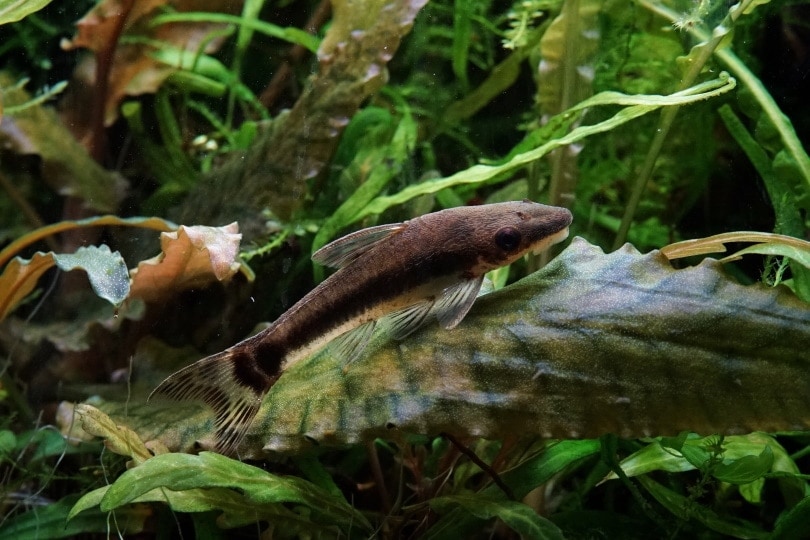
Appearance & Varieties
The differences in the fish called “Otocinclus Catfish” show how easy it is to misidentify a specimen. The defining characteristic of the Otocinclus macrospilus is the black spot on its caudal fin. Its mottled pattern provides excellent camouflage. The O. vittatus has a lighter underside topped by a black stripe that leads to a smaller black mark on the caudal tail.
The O. vestitus differs from the previous two because it lacks the black spot and stripe. It has a mottled coloration. Finally, the Macrotocinclus affinus has a dark stripe and small vertical ones on both sides of it. We don’t know if the species interbreed, which would add another wrinkle to their identification.
How to Take Care of Otocinclus Catfish
One of the best things about the Otocinclus Catfish is its low maintenance. The conditions it prefers are similar to many community fish. Other than providing cover, there’s little more you need to do to help this species thrive. In return, you get a clean tank.
Habitat, Tank Conditions & Setup
In the wild, the Otocinclus Catfish lives in slow-moving waters, small streams. Surprisingly, many species in this genus can breathe air. While it dwells primarily on the bottom, you may see it near the surface occasionally.
Tank Size
We mentioned that the Otocinclus Catfish is a schooling species. Consequently, you need a big enough tank to accommodate them. A 10-gallon aquarium is the minimum size you’ll need for six fish. If you want more, you should get a larger tank. Fortunately, most catfish don’t get very large, typically 2 inches or under, depending on the species.
Water Conditions
Otocinclus Catfish prefer relatively warm water with a pH range on the acidic side between 6.0 to 7.5. You should also maintain good quality conditions. While it lives in slow-moving waters, adequate dissolved oxygen is imperative for the fish’s good health. Running an air stone can help maintain it. We recommend frequent water testings, particularly for pH, ammonia, and nitrites.
Tank Setup
The structure is vital for the Otocinclus Catfish. It will provide surfaces for algae to grow. You can add driftwood, rocks, and other objects to provide welcome cover. A heater and standard lighted hood are also necessary. Both will spur algae growth so that your catfish have enough to eat. However, avoid placing the tank in direct sunlight.
Lighting
Make sure to have an LED light that you keep on during the day, as this will help create algae for these fish to eat.
Substrate
Sand makes an ideal substrate for both the catfish and the live plants your aquarium should contain.
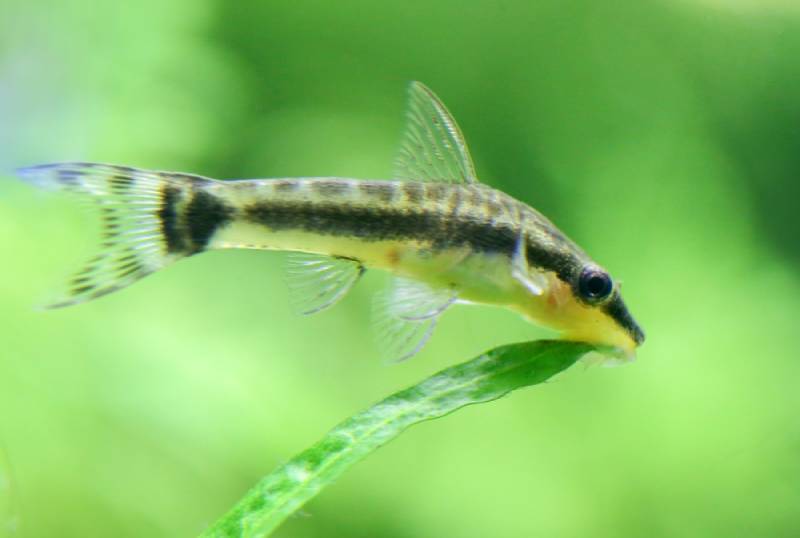
Are Otocinclus Catfish Good Tank Mates?
The Otocinclus Catfish makes an excellent tank mate since it won’t bother other fish in the aquarium. Many other species use different areas in the water, reducing the chances of conflict. Its algae diet also benefits other fish by helping to maintain the water quality. Nevertheless, it produces a lot of waste. Therefore, you should siphon the substrate regularly to maintain an ideal water chemistry.
Species that can live peacefully with the Otocinclus Catfish include livebearers, tetras, Zebra Danios, and Harlequin Rasboras. Avoid fish such as Tiger Barbs that might harass the slow-moving Otocinclus Catfish.
What to Feed Your Otocinclus Catfish
Algae is the Otocinclus Catfish’s preferred food. However, if your fish are too good at their job, you can supplement their diet with blanched greens and commercial algae wafers. However, if you add other foods to the tank, make sure to remove the excess to avoid fouling the water. These fish feed throughout their day.
Keeping Your Otocinclus Catfish Healthy
Maintaining good water quality is the best way to keep the Otocinclus Catfish healthy. The fish is sensitive to poor conditions. That may explain why it evolved its air-breathing ability. A power filter will ensure enough surface agitation to maintain good dissolved oxygen levels. We also recommend removing dead vegetation if you have live plants. Bi-monthly water changes are also essential.
Signs of a potential illness include lethargy, loss of color, and rapid breathing. Therefore, we suggest checking your tank daily to ensure all is well. Again, regular water testing is the key to healthy fish.
Breeding
Otocinclus Catfish typically are not bred in captivity because of the difficulty. Hence, most fish you’ll find are wild-caught. You can encourage it by setting up another tank designated for this purpose. You should increase the temperature to the higher end of its range. The female lays eggs on wood or plants. However, neither the male nor female care for them or the fry.
Are Otocinclus Catfish Suitable for Your Aquarium?
The Otocinclus Catfish is an excellent choice for your community tank. They will fit in well with other peaceful fish species. They’ll carry their weight by helping to keep your aquarium algae-free. That can, in turn, keep the water quality stable. It’s worth noting their contribution to their health and survival. By removing algae, they can prevent unhealthy conditions that could harm them and their tank mates.
Other things make them a good choice, such as their peaceful nature. They occupy an area that other fish may not use. Their relative hardiness and affordable price make it a no-brainer.
Featured Image Credit: Swapan Photography, Shutterstock



